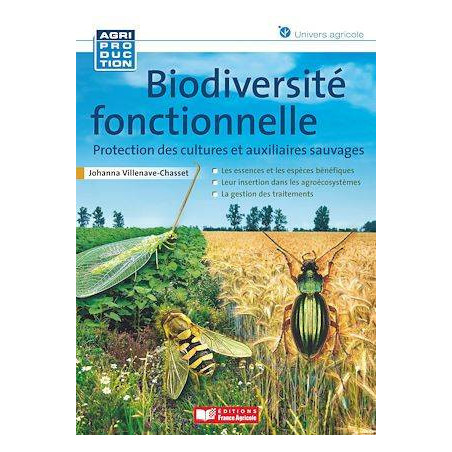



Visa, MasterCard, Amex, Paypal or 3 times, interest-free with Scalapay

0.01€ from 35€ of purchase in France*

Worldwide Shipping

**Biological control** For millennia, humans have used other animals to protect themselves from harmful organisms. In antiquity, it was the cat, revered in Egypt, that was bred to protect food supplies from rodent attacks. More recently, in the 19th century, René-Antoine Ferchault de Réaumur, a French physicist and naturalist, conducted research on some beneficial insects, including a lacewing (hemerobe), to protect plants from aphid attacks. In the 1970s, biological control was developed, which involves the use and trade of living organisms (referred to as "beneficials" in this context) or their products to prevent or reduce losses or damages caused by harmful organisms. However, it is often used in protected environments, such as greenhouses or tunnels, where the pests are identified to purchase and release the most suitable beneficials. These can be native or exotic species. They clean plants very well, but may leave some prey behind. Predators and parasitoids always keep some individuals for the next generations to prevent the species from disappearing from their environment. However, in artificial and habitat-poor environments, they may not find the other necessary elements for their complete life cycle, such as pollen for hoverflies or hibernation sites. Therefore, regular releases are necessary. Biological control also has the disadvantage of introducing exotic species, as was the case with the Asian lady beetle (Harmonia axyridis), with the risk of them escaping. I recommend reading the booklet "Biological Control: Main Predators" (see bibliography, p. 141) which lists the commercially available predators for biological control and indicates whether these species are native or exotic. This biological control can be combined with other techniques: chemical control, trying to use non-toxic insecticides or slug controls for the released beneficials - biotechnical solutions (such as pheromones) as an interesting alternative to insect use - genetic techniques with the least sensitive varieties possible - or cultural practices that, for example, pay attention to beneficials present in the soil during part of their life cycle (ground beetles, rove beetles, parasitoids).
Data sheet